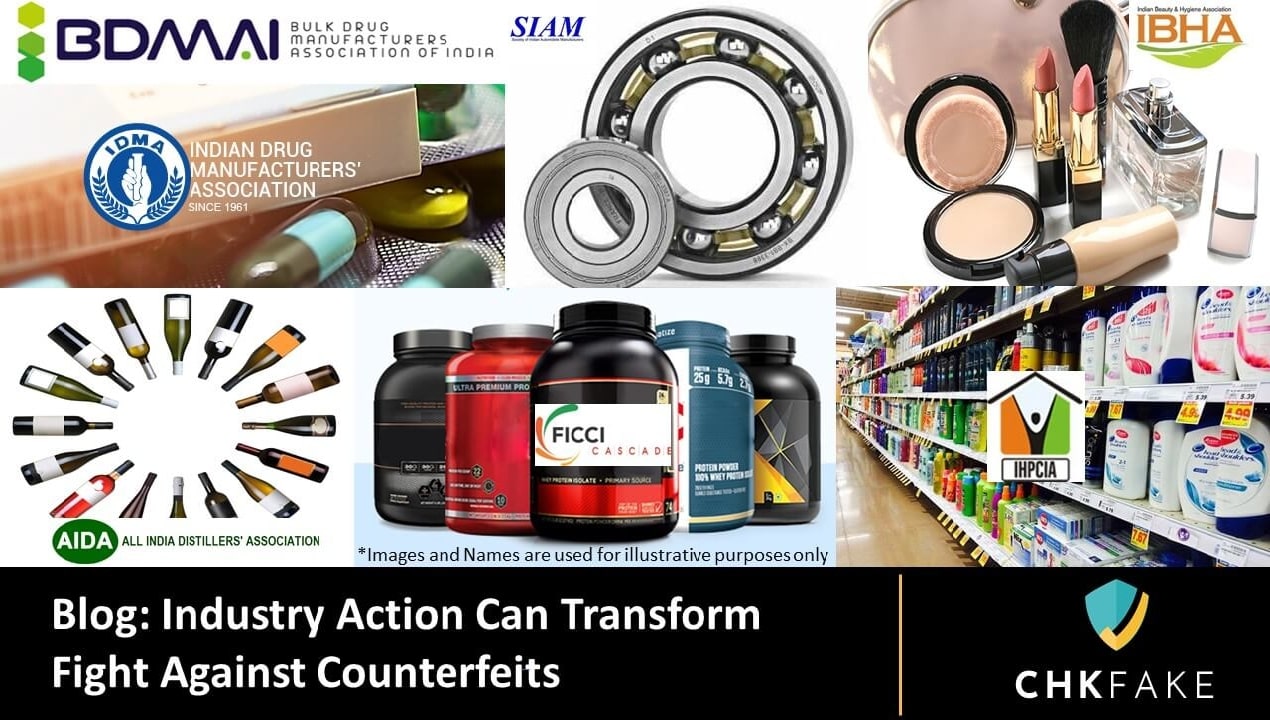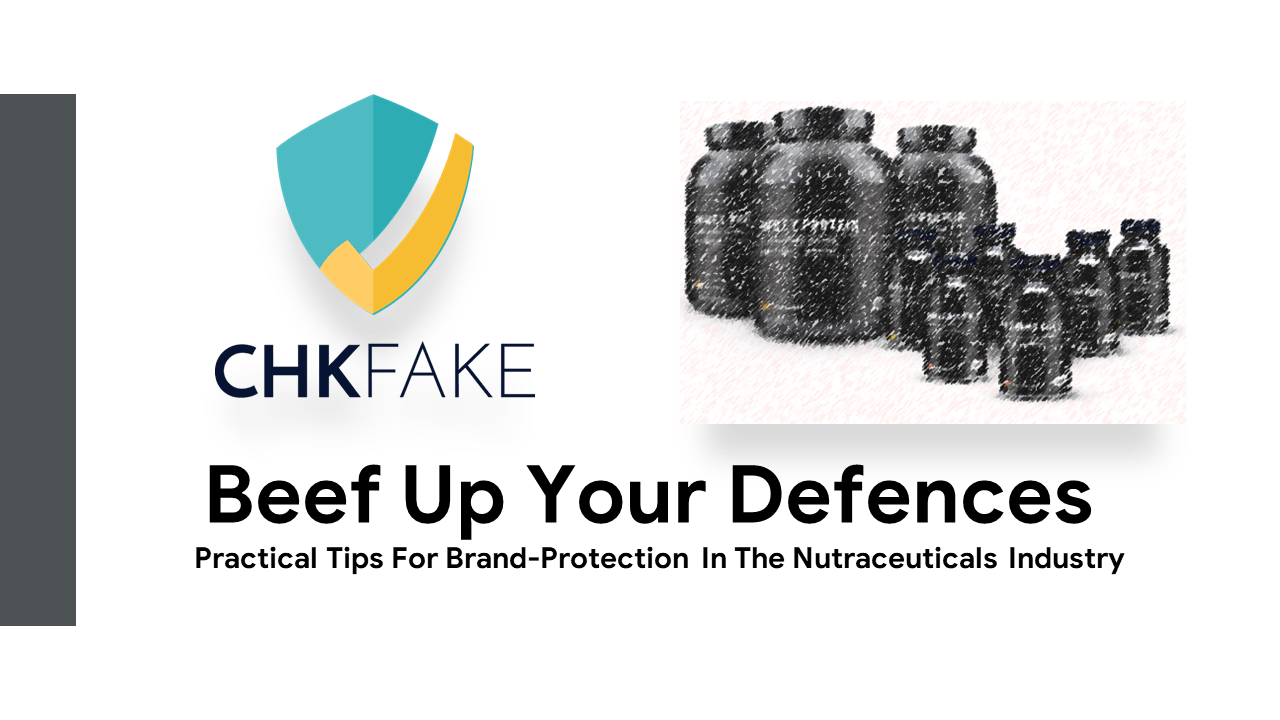
Brand protection is serious business but many businesses either don’t take it holistically or end up doing a half-hearted job of it. There is a massive upside in revenue enhancement, as well as mitigating reputation risk if a brand protection program is well thought through with a multi-pronged strategy.
While my previous blog “5 Don’ts For Successful Brand Protection” was a good starting point for any business/brand leader who is serious about brand protection, the real value comes from understanding what are the essential building blocks of a successful brand protection program.
Here is our list of top 10 things that an organization should follow to make their brand protection/ anti-counterfeiting program a success.
1. Quantify the Leak

One of the reasons that anti-counterfeiting measures fail to get traction is because no one actually knows the magnitude of revenue loss. Assess the scale of counterfeiting across geographies and channels and understand the potential impact on your business.
2. CX-level ownership

The stakes are too much to ignore. Brand protection should be an organization wide responsibility, just like Safety. Technology and processes can be enablers, but you need a CX-level champion to ensure that it is an organization priority. The CX champion has to drive the Brand Protection roadmap and ensure that it is aligned to business priorities.
3. Resource Allocation
Brand Protection is not just a Legal problem, it is a Business issue. In most organisations, it sits under the Legal department – making most organisations’ response very Enforcement led – since that is the comfort zone of the Legal team.
Even when staffed with a Brand Protection lead, resources are severely constrained. How this person interacts with the rest of the functions is not clear, and often there is lack of support from them. There are also serious budget constraints.

Organizations must realize that a good brand protection program needs an integrated approach and cross-functional buy-in, as well as commitment to investments in anti-counterfeiting technology, customer engagement and enforcement. There is a strong ROI on investments in brand protection, and organisations need to stop thinking of this purely in terms of cost increases.
4. Processes
Next is to look at entire process of infringement identification to successful enforcement action. How is market intelligence gathered? How do we get a fix on where is counterfeiting happening, how, when, scale etc.? What happens when a counterfeit is detected? How does the information flow and to whom? What evidence is collected? What kind of enforcement action needs to be taken against which type of incident?

These can all be driven by a strong internal process which allows the organisation to be proactive in its fight against counterfeits and have a robust response to any counterfeits detected in the market. Technology can play a role here in enabling this process.
5. Accountabilities

While the Legal team is an essential part of Brand Protection, a cross-functional approach is key – and Marketing, Sales and Legal should have joint ownership of the Brand Protection program. The brand protection roadmap should also translate into individual accountabilities through the line and be part of their Key Result Areas (KRAs).
6. Technology

Technology is an essential part of any brand protection program. The intent is to make your products hard to copy, easy for the customer or investigator to differentiate between a genuine and a fake, and help collect evidence that can lead to successful enforcement action.
Choice of the right Technology for your product and category is crucial, and can be your biggest ally in your fight against counterfeits.
7. Educating the Customer
Nothing can match the reach to check counterfeiting than an educated customer. Make your customers your partners in brand protection. Make it simple for them to determine the authenticity of your product, and incentivise them to report infringements when they find them.

Also educate your customers about the risks of buying from unauthorized sellers and the loss that counterfeits cause to the economy and the society.
8. Monitor, Prioritize and Enforce
A good brand protection program should not be an event like Christmas, it needs to be implemented all year long. One needs to constantly monitor the infringements across regions and channels and not only ‘kill the fake’ at the point of sale, but also at the distribution and production facilities. One should prioritize worst offenders and concentrate efforts at them.
You should make an example of some chronic offenders to spread deterrence in the rest of the market. It is doubly important to have a strong intelligence network to be able to take these decisions.
9. Plug Holes in the Value Chain
First, you should contractually ensure that all parties that you work – with – raw material and packaging supplier, toll manufacturer, transporter, distributor etc. – recognise your IP rights and agree not to infringe or help others to do so.

While no clause can guarantee protection against counterfeiting, you should only choose reliable partners after proper investigations. There are cases where trade partners sell counterfeit goods alongside originals. Your contracts should have the provision of monitoring mechanisms and surprise audits to ensure compliance.
10. Partner with Law Enforcement
Counterfeiting impacts not only the brand’s revenues but also the tax collections of governments. Governments through multiple statutes and agencies can support brand owners to check counterfeiting. A strong partnership with relevant law enforcement agencies like Customs, Police, Enforcement Directorate etc. would help in intelligence as well as enforcement efforts.
Counterfeiting is a lucrative business and it will continue to grow and target the more successful brands. From an organizational perspective, winning market share back from counterfeiters is a long game. But continuous and focussed effort will make your brand stronger and redirect the counterfeiter’s attention to an easier target.
A long-term holistic anti-counterfeiting strategy will help brand owners to reclaim the revenue they deserve while protecting their hard-earned reputation.
In our next blog later this week we will cover “Where is your brand value leaking from?” so stay tuned. If you liked what you read, do share in your network. You can follow my articles on LinkedIn and Twitter, or subscribe to My blog.
____________________________________
Tanmay Jaswal is the Founder of Chkfake, a start-up that is disrupting the anti-counterfeiting industry by creating an eco-system of all stakeholders to join the fight against fakes together. The Chkfake mobile app allows users to verify genuineness of any product irrespective of category or brand.
Tanmay has 26 years of global experience in business leadership, marketing and strategy in companies like Coca-Cola and Shell and is an acknowledged authority on brand protection. He has headed the brand protection function for Shell globally and has extensive experience in this space over the last 8 years.






0 Comments